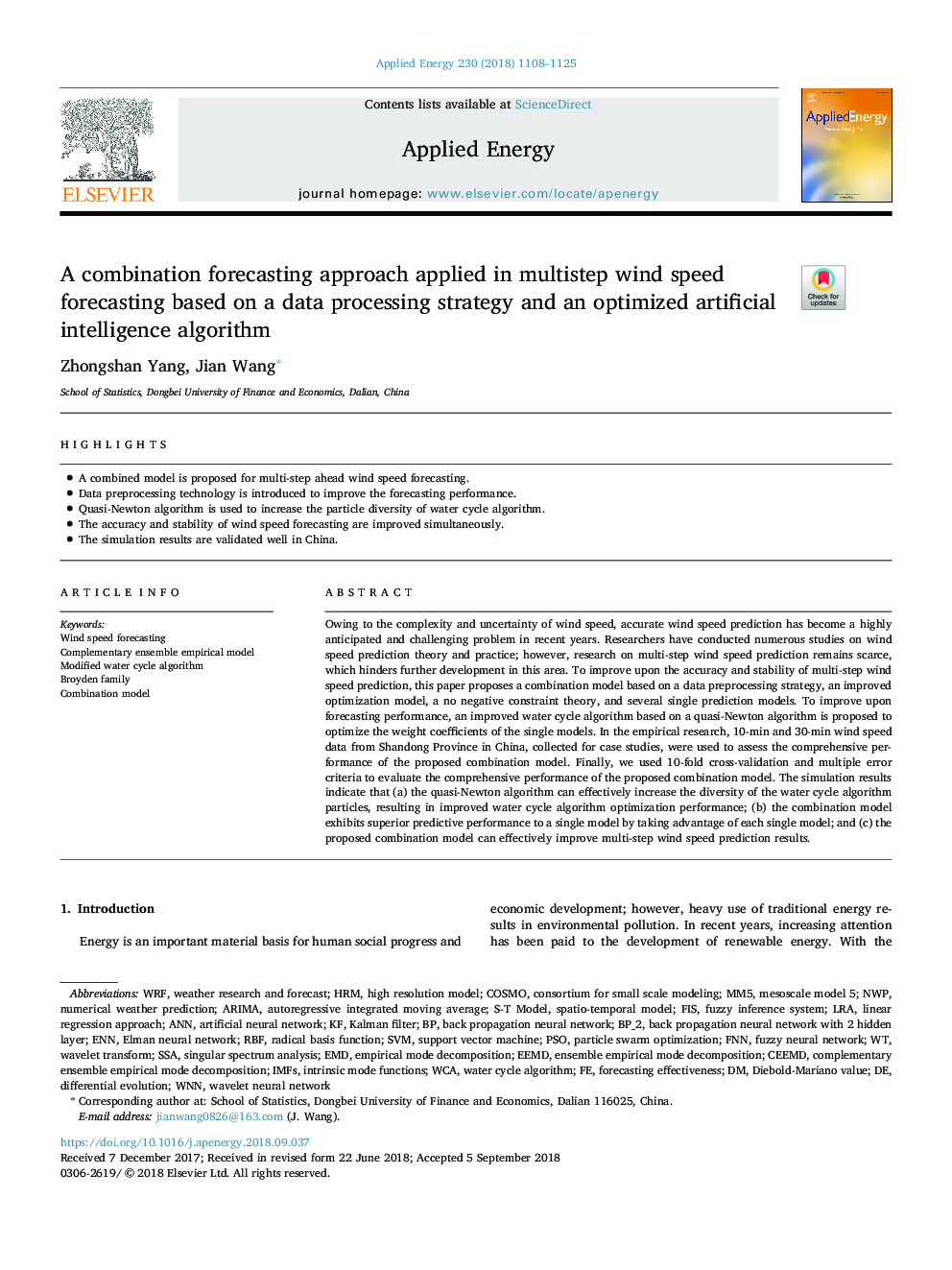| Article ID | Journal | Published Year | Pages | File Type |
|---|---|---|---|---|
| 10131489 | Applied Energy | 2018 | 18 Pages |
Abstract
Owing to the complexity and uncertainty of wind speed, accurate wind speed prediction has become a highly anticipated and challenging problem in recent years. Researchers have conducted numerous studies on wind speed prediction theory and practice; however, research on multi-step wind speed prediction remains scarce, which hinders further development in this area. To improve upon the accuracy and stability of multi-step wind speed prediction, this paper proposes a combination model based on a data preprocessing strategy, an improved optimization model, a no negative constraint theory, and several single prediction models. To improve upon forecasting performance, an improved water cycle algorithm based on a quasi-Newton algorithm is proposed to optimize the weight coefficients of the single models. In the empirical research, 10-min and 30-min wind speed data from Shandong Province in China, collected for case studies, were used to assess the comprehensive performance of the proposed combination model. Finally, we used 10-fold cross-validation and multiple error criteria to evaluate the comprehensive performance of the proposed combination model. The simulation results indicate that (a) the quasi-Newton algorithm can effectively increase the diversity of the water cycle algorithm particles, resulting in improved water cycle algorithm optimization performance; (b) the combination model exhibits superior predictive performance to a single model by taking advantage of each single model; and (c) the proposed combination model can effectively improve multi-step wind speed prediction results.
Keywords
EMDMM5NWPLRASSAARIMAEEMDFnnWRFRBFHRMWCACEEMDWNNANNFISElman neural networkDifferential evolutionWater cycle algorithmParticle swarm optimizationPSOWavelet transformEmpirical mode decompositionComplementary ensemble empirical mode decompositionEnsemble Empirical mode decompositionSingular spectrum analysisIntrinsic mode functionsFuzzy inference systemFuzzy neural networkArtificial Neural NetworkWavelet neural networkBack propagation neural networkIMFsKalman filterSupport vector machineSVMSpatio-temporal modelCombination modelAutoregressive Integrated Moving AverageEnnNumerical weather predictionWind speed forecastingCOSMO
Related Topics
Physical Sciences and Engineering
Energy
Energy Engineering and Power Technology
Authors
Zhongshan Yang, Jian Wang,
